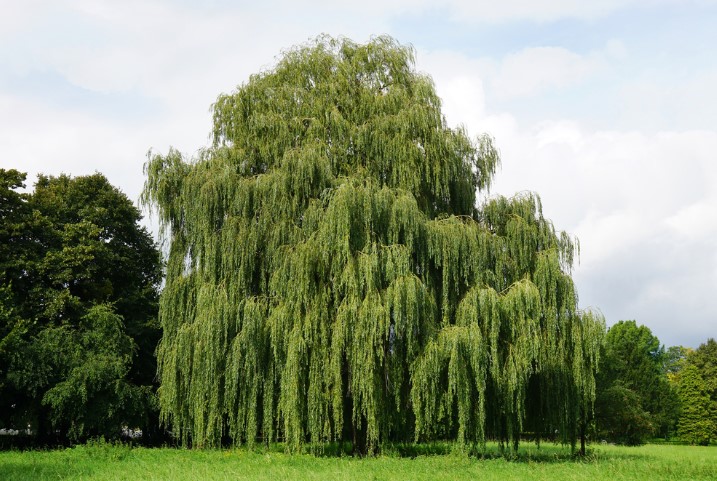
Australia’s unique ecosystems are home to a diverse range of flora and fauna. Among the many native plant species, weeping trees stand out as both ornamental and ecologically significant. In this article, we will explore how weeping trees contribute to the ecological balance in Australia and why planting them from Kilby Tree Farm is an environmentally responsible choice.
The Beauty and Significance of Weeping Trees
Weeping trees, characterised by their graceful, cascading branches, are aesthetically pleasing and play a vital role in Australian ecosystems. These trees have adapted to various climatic conditions across the country, making them an integral part of our natural landscape.
- Habitat and Biodiversity
Weeping trees provide habitat and sustenance to a myriad of native wildlife. Their dense foliage offers shelter for birds, insects, and small mammals, creating a thriving micro-ecosystem within their branches. Nectar-producing flowers on some weeping tree species attract pollinators like bees and butterflies, contributing to the pollination of other plants.
- Soil Stabilisation and Erosion Control
The roots of weeping trees help stabilise soil, preventing erosion in areas prone to heavy rainfall or high winds. This is particularly important in regions like Australia, where the landscape can be vulnerable to erosion due to its unique geology and climatic conditions.
- Water Management
Weeping trees can play a role in regulating water flow in local ecosystems. Their root systems absorb excess water during periods of heavy rainfall, reducing the risk of flooding. During dry spells, they release stored water back into the soil, aiding in maintaining groundwater levels.
- Air Quality Improvement
Like all trees, weeping trees play a part in improving air quality. They absorb carbon dioxide from the atmosphere and release oxygen, helping to mitigate the effects of climate change and providing cleaner air for us to breathe.
Kilby Tree Farm: Your Source for Eco-Friendly Weeping Trees
When it comes to sourcing weeping trees that are not only beautiful but also environmentally responsible, Kilby Tree Farm is a name you can trust. Kilby Tree Farm specialises in providing a diverse range of native Australian weeping trees cultivated and committed to sustainability and conservation.
By choosing weeping trees from Kilby Tree Farm, you are enhancing the beauty of your landscape and contributing to the preservation of Australia’s unique ecosystems.
Conclusion
Weeping trees are not just decorative additions to our gardens but essential components of Australia’s delicate ecosystems. Their contribution to biodiversity, soil stabilisation, water management, and air quality improvement makes them valuable assets to our environment.
As responsible stewards of the land, we must consider the ecological impact of our landscaping choices. By selecting weeping trees from Kilby Tree Farm, you are making a conscious decision to support local, sustainable practices and help protect Australia’s natural heritage.
Incorporate weeping trees into your landscape, and you’ll not only enjoy their beauty but also contribute to the well-being of our environment. Together, we can ensure that Australia’s unique ecosystems continue to thrive for generations.
FAQs
- What are weeping trees, and why are they significant in Australian ecosystems?
Weeping trees are characterised by their cascading branches and play a crucial role in Australian ecosystems by providing habitat for wildlife, stabilising soil, managing water resources, and improving air quality.
- How do weeping trees contribute to biodiversity in Australia?
Weeping trees offer shelter and food for a variety of native wildlife, including birds, insects, and small mammals. Their nectar-producing flowers also attract pollinators, supporting broader biodiversity.
- Can weeping trees help prevent soil erosion in Australia?
Yes, the root systems of weeping trees help stabilise soil, reducing the risk of erosion in regions prone to heavy rainfall or strong winds.
- How do weeping trees assist with water management in Australian ecosystems?
Weeping trees absorb excess water during heavy rainfall, reducing the risk of flooding. During dry periods, they release stored water back into the soil, aiding in maintaining groundwater levels.
- Do weeping trees improve air quality in Australia?
Yes, weeping trees, like all trees, absorb carbon dioxide and release oxygen, contributing to better air quality and helping mitigate the effects of climate change.
- Why should I choose weeping trees from Kilby Tree Farm for my landscaping projects?
Kilby Tree Farm specialises in providing native Australian weeping trees cultivated with a commitment to sustainability and conservation. Choosing trees from Kilby Tree Farm supports environmentally responsible landscaping practices.
- Are weeping trees from Kilby Tree Farm suitable for both residential and commercial landscaping projects?
Yes, weeping trees from Kilby Tree Farm are suitable for a wide range of landscaping projects, from residential gardens to large-scale commercial developments.
- How can I ensure the weeping trees I purchase from Kilby Tree Farm are well-suited to my specific region in Australia?
Kilby Tree Farm’s experienced staff can guide you in selecting the right weeping tree species for your region and specific landscaping needs.
- Are there any maintenance tips for caring for weeping trees from Kilby Tree Farm?
Kilby Tree Farm can offer expert advice on the care and maintenance of their weeping trees, ensuring their longevity and health in your landscape.
- Does Kilby Tree Farm support sustainable practices in tree cultivation?
Yes, Kilby Tree Farm is committed to sustainability and conservation. They employ eco-friendly practices to grow and nurture their weeping trees.
- Can I visit Kilby Tree Farm to see their weeping tree selection in person?
You can inquire with Kilby Tree Farm about visiting their location to explore their weeping tree offerings and receive personalised advice.
- How can I contact Kilby Tree Farm to learn more about their eco-friendly weeping trees?
You can reach out to Kilby Tree Farm through their website or contact them directly via phone or email to inquire about their weeping tree selection and eco-friendly practices.
